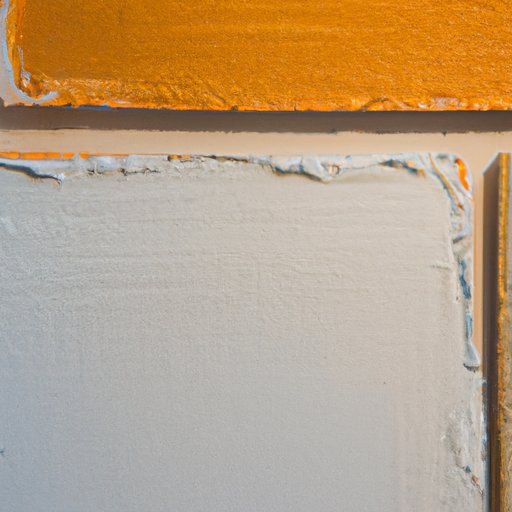Introduction
Oil painting is a popular art form that has been around since ancient times. It involves using pigments suspended in oil (usually linseed or safflower) to create a variety of effects on canvas. The process of creating an oil painting can be lengthy and complex, but one of the most important steps is allowing the painting to properly dry.
When an oil painting is finished, the drying process begins. This process can take anywhere from days to weeks, depending on various factors. In this article, we’ll explore how long it takes an oil painting to dry, as well as the different factors that can affect the drying speed.
Step-by-Step Guide to Understanding How Long it Takes an Oil Painting to Dry
Understanding how long it takes an oil painting to dry can be difficult, as there are many factors that can affect the drying speed. To start, let’s look at two of the most important factors: temperature and humidity.
Temperature and humidity are both key components in the drying process. If the air is too cold, the paint will take longer to dry. On the other hand, if the air is too humid, the paint may never fully dry. So, it’s important to ensure that the environment where the painting is drying is neither too hot nor too cold, and that the humidity level is low.
In addition to temperature and humidity, there are several other factors that can affect the drying time of an oil painting. These include:
- Thickness of paint applied
- Type of paint used
- How much medium is added
- Use of a heat source
We’ll explore each of these factors in greater detail later in this article.

Exploring the Different Factors That Affect the Drying Speed of an Oil Painting
Now that we’ve discussed the importance of temperature and humidity, let’s take a closer look at the other factors that can affect the drying speed of an oil painting.
Temperature
As mentioned earlier, temperature plays an important role in the drying process. If the air is too cold, the paint will take longer to dry. For best results, the ideal temperature for drying an oil painting is between 70-80°F (21-27°C).
Humidity
The humidity level of the room where the painting is drying is also important. If the air is too humid, the paint may never fully dry. For best results, the ideal humidity level is between 40-60%.
Paint Thickness
The thickness of the paint layers applied can also affect the drying speed. Thicker layers of paint will take longer to dry than thinner layers. If you’re looking to speed up the drying process, try applying thinner coats of paint.
Type of Paint
The type of paint used can also have an effect on the drying speed. Some paints are designed to dry faster than others. If you’re looking for a fast-drying paint, look for a product specifically labeled as such.
Addition of Medium
The addition of medium can also affect the drying speed. Mediums are added to paint to give it a certain consistency or finish. Depending on the type of medium used, it can either speed up or slow down the drying process.
Use of a Heat Source
Finally, the use of a heat source can also affect the drying speed. Using a fan or hairdryer on low heat can help speed up the drying process. However, it’s important to keep in mind that too much heat can damage the painting, so use caution when using a heat source.
The Benefits of Waiting for Your Oil Painting to Fully Dry Before Applying a Varnish
Once your oil painting is finished, it’s important to wait for it to fully dry before applying a varnish. Varnish is a protective coating that can help preserve the painting and improve its longevity. But if you apply the varnish too soon, it won’t adhere properly and can cause damage to the painting.
Waiting for the painting to dry completely before applying a varnish also makes the varnishing process easier. A dry painting will absorb the varnish more evenly and won’t require as many coats.

Tips and Techniques for Quickly Drying an Oil Painting
If you need to speed up the drying process of your oil painting, here are a few tips and techniques you can use:
- Use a fan or hairdryer on low heat to help circulate the air and reduce humidity.
- Place the painting in a warm, dry room. This will help the paint dry faster.
- Use a dehumidifier to reduce the humidity in the room.

Comparing the Drying Times of Different Oil Paint Brands
Different brands of oil paint vary in their drying times. Some brands are designed to dry faster than others, while some are designed to take longer to dry. When selecting a brand of paint, it’s important to consider the drying time as well as the quality of the paint.
Conclusion
In conclusion, understanding how long it takes an oil painting to dry can be difficult, as there are many factors that can affect the drying speed. Temperature, humidity, paint thickness, type of paint, addition of medium, and the use of a heat source can all play a role in how long it takes an oil painting to dry. It’s also important to wait for your painting to fully dry before applying a varnish. Finally, different brands of oil paint vary in their drying times, so be sure to consider this when selecting a brand.
By taking all of these factors into consideration, you can ensure that your oil painting dries properly and that it lasts for years to come.


